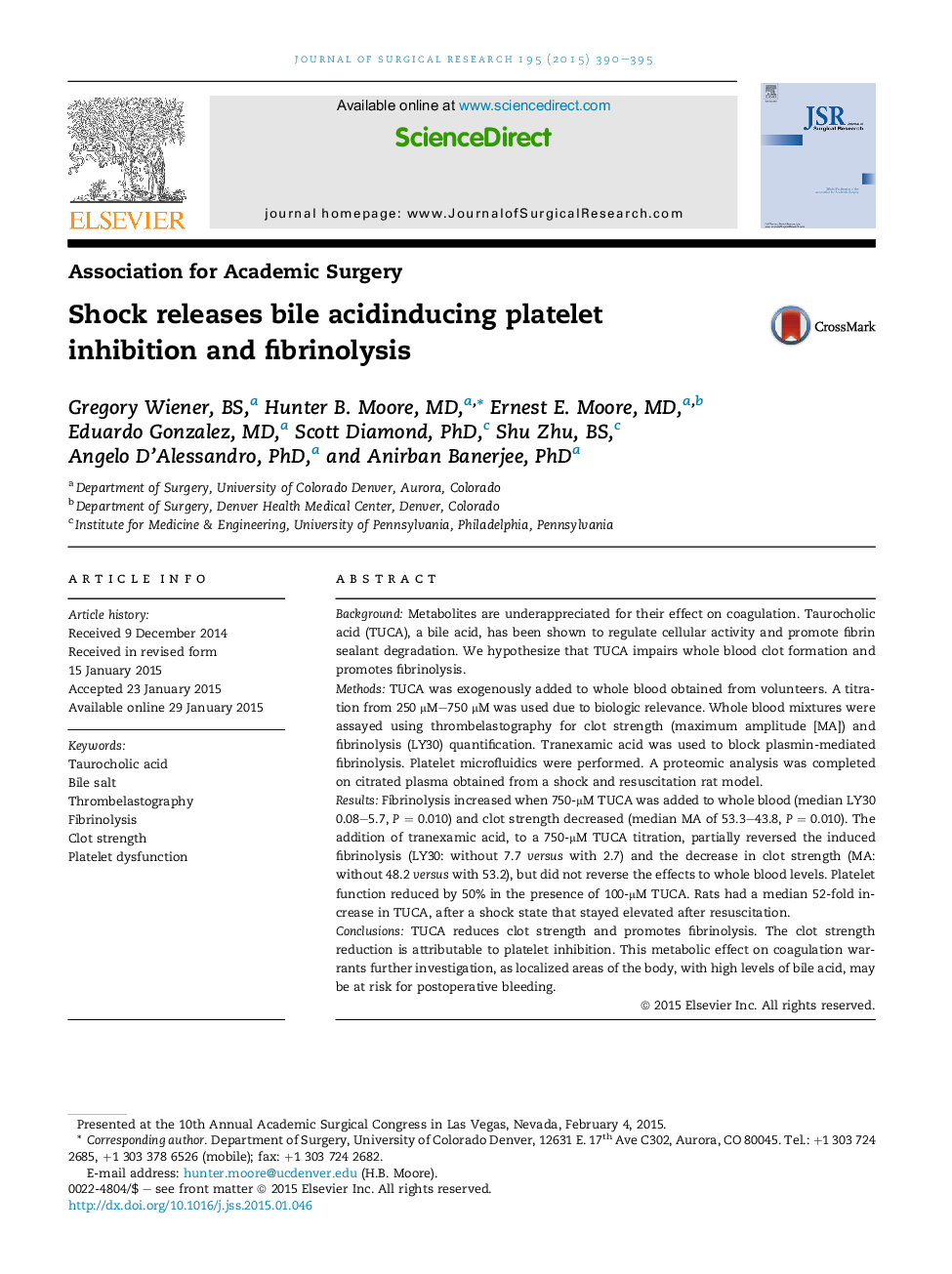| کد مقاله | کد نشریه | سال انتشار | مقاله انگلیسی | نسخه تمام متن |
|---|---|---|---|---|
| 4299668 | 1288398 | 2015 | 6 صفحه PDF | دانلود رایگان |
BackgroundMetabolites are underappreciated for their effect on coagulation. Taurocholic acid (TUCA), a bile acid, has been shown to regulate cellular activity and promote fibrin sealant degradation. We hypothesize that TUCA impairs whole blood clot formation and promotes fibrinolysis.MethodsTUCA was exogenously added to whole blood obtained from volunteers. A titration from 250 μM–750 μM was used due to biologic relevance. Whole blood mixtures were assayed using thrombelastography for clot strength (maximum amplitude [MA]) and fibrinolysis (LY30) quantification. Tranexamic acid was used to block plasmin-mediated fibrinolysis. Platelet microfluidics were performed. A proteomic analysis was completed on citrated plasma obtained from a shock and resuscitation rat model.ResultsFibrinolysis increased when 750-μM TUCA was added to whole blood (median LY30 0.08–5.7, P = 0.010) and clot strength decreased (median MA of 53.3–43.8, P = 0.010). The addition of tranexamic acid, to a 750-μM TUCA titration, partially reversed the induced fibrinolysis (LY30: without 7.7 versus with 2.7) and the decrease in clot strength (MA: without 48.2 versus with 53.2), but did not reverse the effects to whole blood levels. Platelet function reduced by 50% in the presence of 100-μM TUCA. Rats had a median 52-fold increase in TUCA, after a shock state that stayed elevated after resuscitation.ConclusionsTUCA reduces clot strength and promotes fibrinolysis. The clot strength reduction is attributable to platelet inhibition. This metabolic effect on coagulation warrants further investigation, as localized areas of the body, with high levels of bile acid, may be at risk for postoperative bleeding.
Journal: Journal of Surgical Research - Volume 195, Issue 2, 15 May 2015, Pages 390–395
